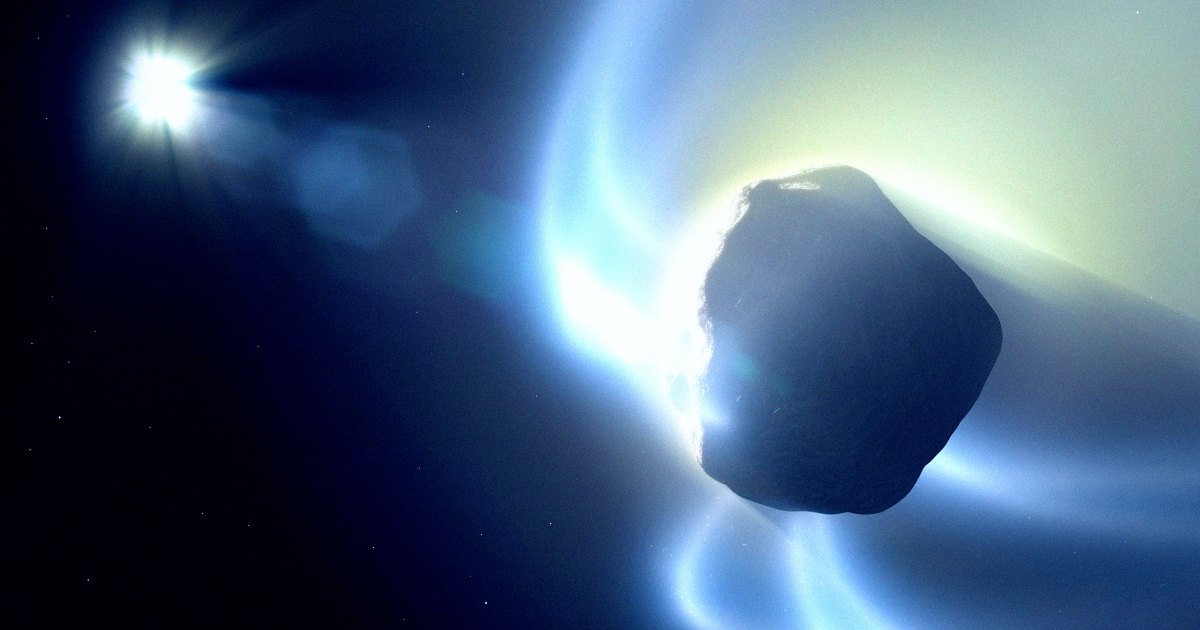On October 29, Comet 3I/ATLAS reached its closest point to the Sun.
This point, known as perihelion, was around 210 million kilometres from the Sun, or 1.4 times the distance between the Sun and Earth, and it was on the opposite side of the Sun to Earth. This means the Sun has been blocking the comet from our view (from Earth). There are already reports it’s been detected again using ground-based telescopes.
The comet is the third interstellar object (hence the “3I”) we’ve detected flying through our Solar System.
When it was first detected on July 1 2025 by the Asteroid Terrestrial Last Alert System (or “ATLAS”), one of the first questions people asked was “but is it aliens?”.
This isn’t the first time the alien question has come up in the context of a new astronomical discovery. But although it might be fun, it can also detract from the real (and very cool) science, and fuel misinformation.
A long history of speculation
Similar alien speculation arose when the first two interstellar objects were discovered: 1I/2017 U1 ‘Oumuamua and Comet 2I/Borisov.
And it doesn’t just happen for interstellar objects.
In 2019, I wrote my first public article about a discovery I made as a PhD student. I had found radio light coming from a binary star system, the first object found by the MeerKAT telescope to be changing brightness over time. Even though this had nothing to do with aliens, the editor asked me to include speculation about them.
In 1967, Jocelyn Bell Burnell, then a PhD student, discovered a rapidly repeating flash of radio light.
As a joke, she labelled it LGM 1 for “Little Green Men”, but the astronomers working on it did not really believe they had discovered aliens. They were, however, concerned about the possibility that alien-related media coverage would sensationalise the discovery and hinder their scientific investigations.
A 7 billion-year-old visitor
This concern remains for astronomers today.
Comet 3I/ATLAS is possibly the oldest thing we’ve ever seen in our Solar System. Our Solar System formed 4.6 billion years ago, while recent research points to Comet 3I/ATLAS possibly being more than 7 billion years old.
It has spent a lot of that time zipping through the universe just to spend a few months in our Solar System. When the comet reached perihelion, that’s probably the closest it’s been to a star in at least millions of years.
Research has shown the comet has more carbon dioxide in its outer layers than has been seen in most comets in our Solar System. It also has a higher ratio of nickel to other elements than has been seen in local comets.
These chemical signatures give us a unique insight into the chemical composition of the cloud of gas that formed the solar system where the comet came from.
This is one of the key reasons why we should only be asking about aliens when all other possibilities are exhausted. When we talk about aliens first, we might miss all this amazing information.
As astronomer Carl Sagan said (in his rewording of a principle by French mathematician Pierre-Simon Laplace), “extraordinary claims require extraordinary evidence”. It’s true we can’t completely explain every detail of the comet yet, but not knowing everything is not evidence of aliens.
Embrace the uncertainties
Talking about aliens also leaves room for misinformation to spread.
For example, there have been claims of things such as trajectory shifts and Comet 3I/ATLAS “hiding” behind the Sun. Despite no evidence to support this, I received many questions along these lines when I spoke about the comet online. This demonstrates how easy it is for misinformation to be generated and spread when we’re talking about “aliens”.
There are ways to see the comet while it’s on the other side of the Sun. For example, the European Space Agency plans to observe the comet using the Mars Express, ExoMars Trace Gas Orbiter and the Jupiter Icy Moons Explorer.
And if you’d like to see the trajectory of Comet 3I/ATLAS and find out where it is right now, you can.
There might be something to be learned from poets here. Romantic poet John Keats wrote about something he called “negative capability”. It’s a strange name, but the concept is about being able to sit with “uncertainties, mysteries and doubts” and be content with not knowing.
There’s a lot we don’t know about Comet 3I/ATLAS and about the universe. It wouldn’t be much fun to be an astronomer if we knew everything already. But when there’s something unknown, we humans like to fill that gap.
For astronomy mysteries, the gap tends to be filled with aliens. However, not knowing all the answers is not proof of aliens. It just means that we have work to do.


